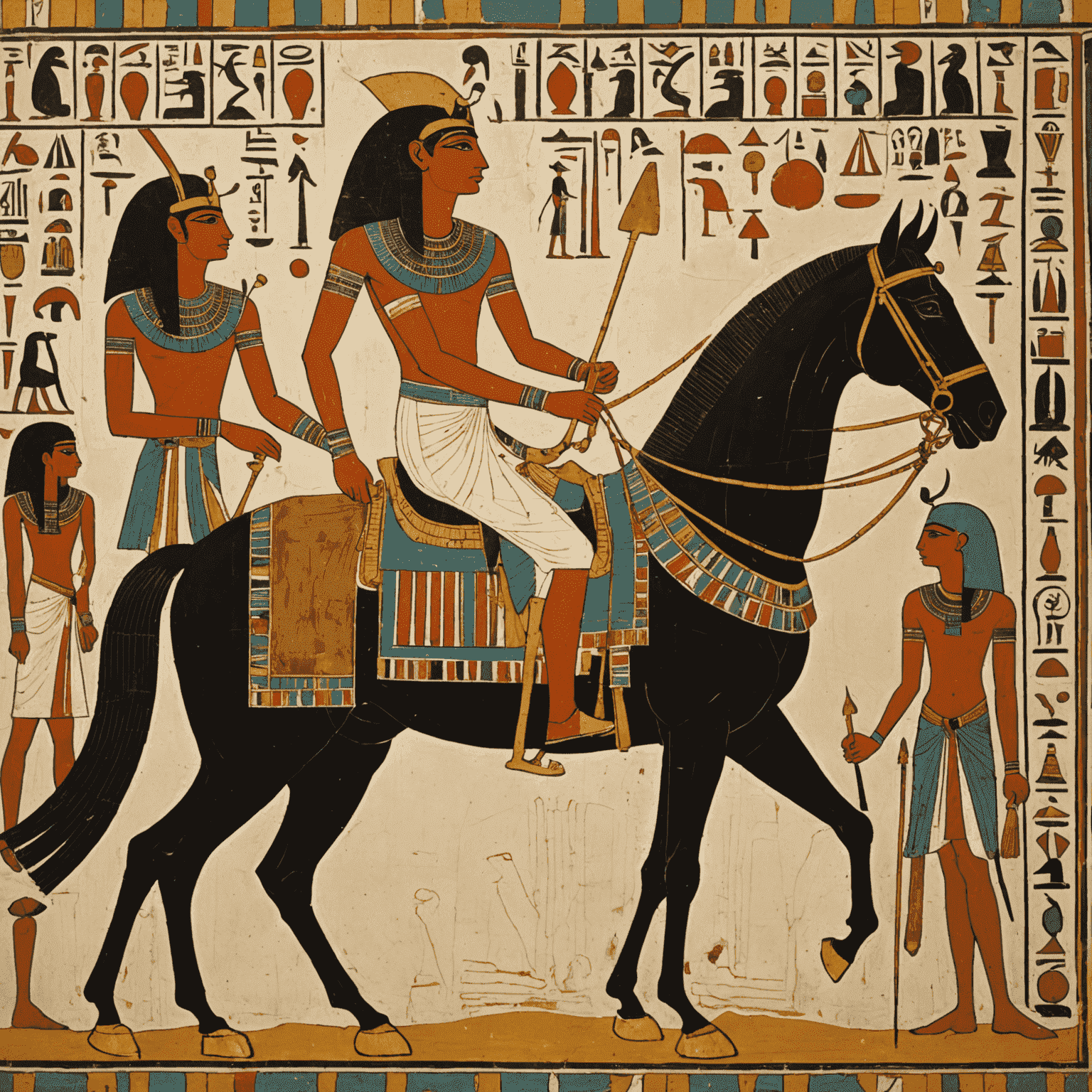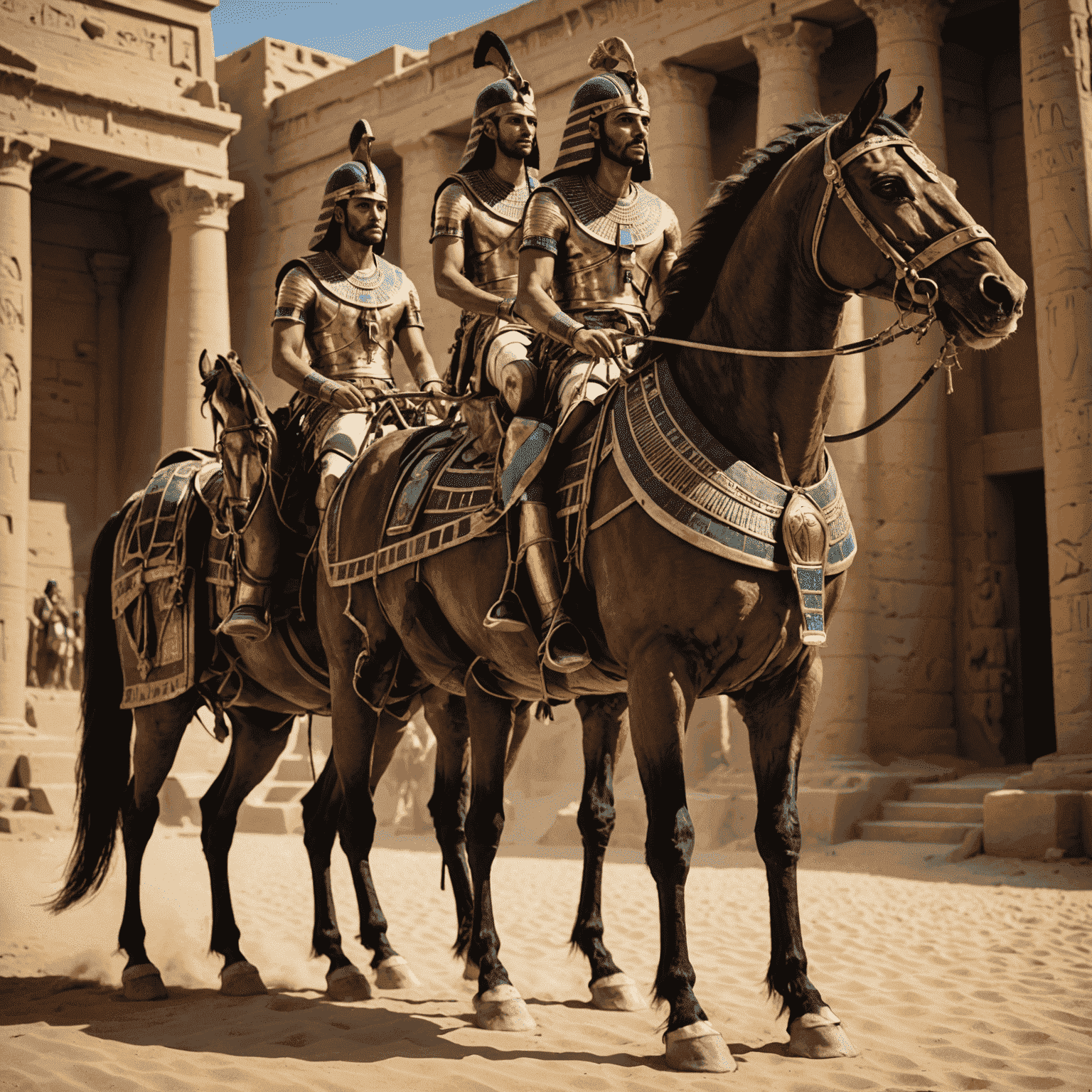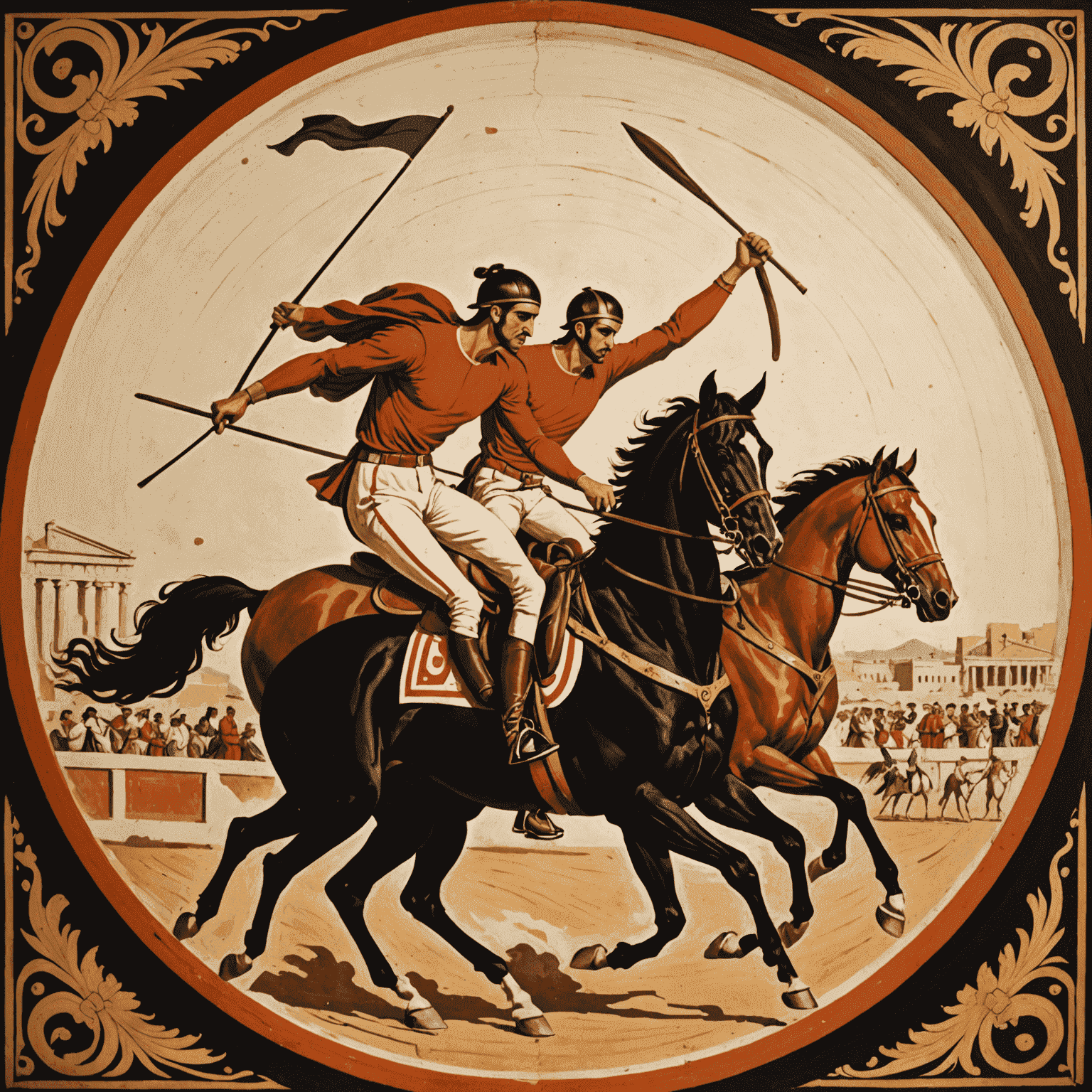Ancient Equestrian Practices

The art of horseback riding has been an integral part of human civilization for millennia, shaping warfare, transportation, and sport. This exploration delves into the origins of equestrian practices in three pivotal ancient civilizations: Egypt, Greece, and Rome.
Egypt: Chariots and Cavalry
In ancient Egypt, horses were introduced around 1600 BCE, during the Second Intermediate Period. Initially, they were primarily used for pulling chariots, which became a symbol of power and military might. The Egyptians developed sophisticated chariot warfare techniques, but horseback riding for military purposes emerged later.

Archaeological evidence, including wall paintings and artifacts, suggests that by the New Kingdom period (c. 1550-1070 BCE), Egyptians had begun to ride horses without chariots. This evolution in equestrian practices played a crucial role in expanding and defending the Egyptian empire.
Greece: From Myth to Olympic Glory
Greek mythology is replete with equestrian imagery, from the winged horse Pegasus to the centaurs. In reality, horseback riding in ancient Greece evolved from practical military use to prestigious athletic competitions.
The Greeks were among the first to use cavalry effectively in warfare, with notable developments occurring during the 4th century BCE. However, it was in the realm of sport that Greek equestrian practices truly shone. Horse and chariot races were introduced to the Olympic Games in 680 BCE, becoming one of the most celebrated events.

The hippodrome, a stadium designed for horse and chariot racing, became a central feature in many Greek cities, underlining the importance of equestrian sports in Greek culture.
Rome: Cavalry and Spectacle
The Romans built upon Greek equestrian traditions, developing a formidable cavalry that played a crucial role in the expansion and maintenance of their vast empire. Roman equestrian practices were deeply intertwined with social and political structures, with the equestrian order (ordo equester) forming an elite social class.
In terms of sport and entertainment, the Romans elevated equestrian spectacles to new heights. The Circus Maximus in Rome, primarily used for chariot racing, could hold up to 150,000 spectators, making it the largest sports arena in the ancient world.

Roman cavalry techniques and training methods, documented in works like Xenophon's "On Horsemanship," laid the foundation for many modern equestrian practices.
Legacy and Influence
The equestrian practices developed in these ancient civilizations have had a lasting impact on the evolution of horseback riding. From military tactics to sporting events, the foundations laid by the Egyptians, Greeks, and Romans continue to influence modern equestrian sports and traditions.
As we reflect on these ancient practices, we gain a deeper appreciation for the rich history of equestrianism and the enduring bond between humans and horses that has shaped civilizations throughout the ages.